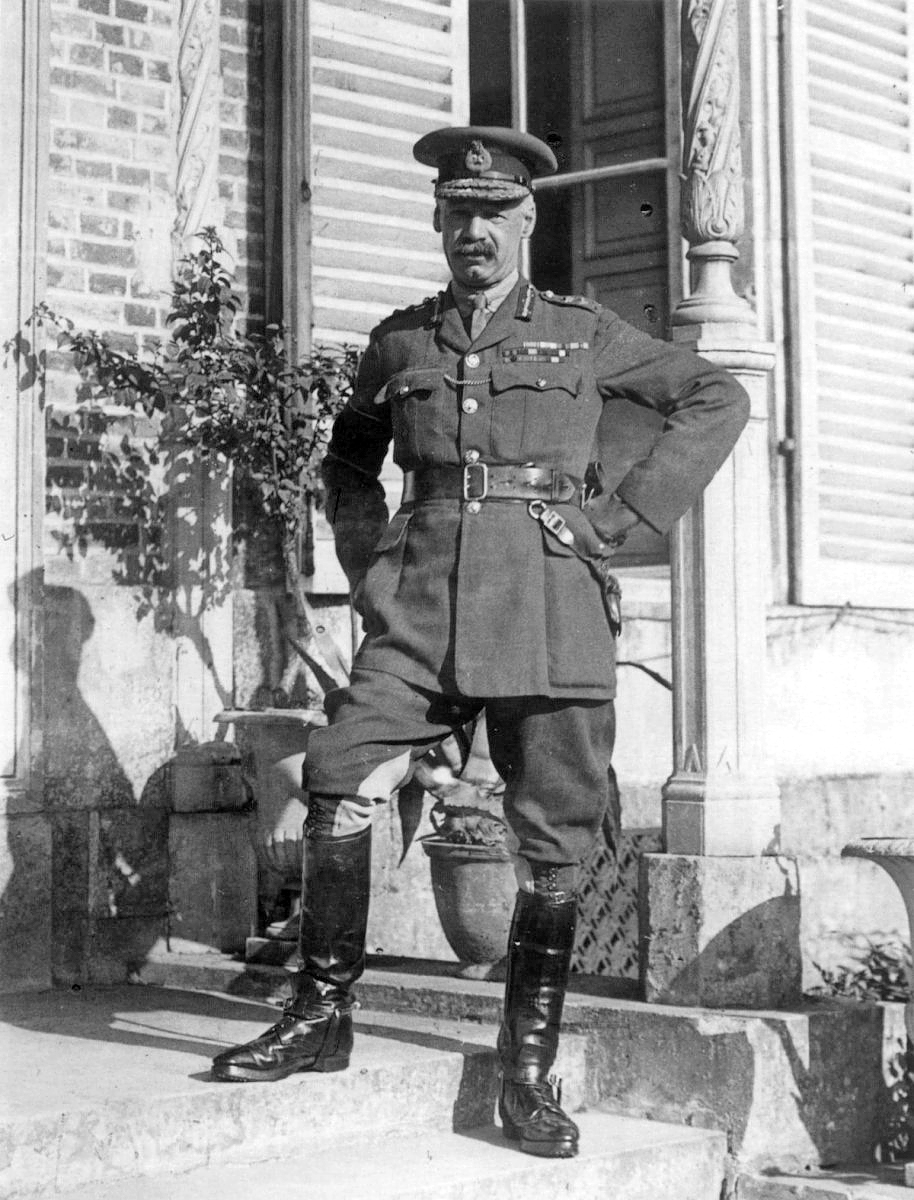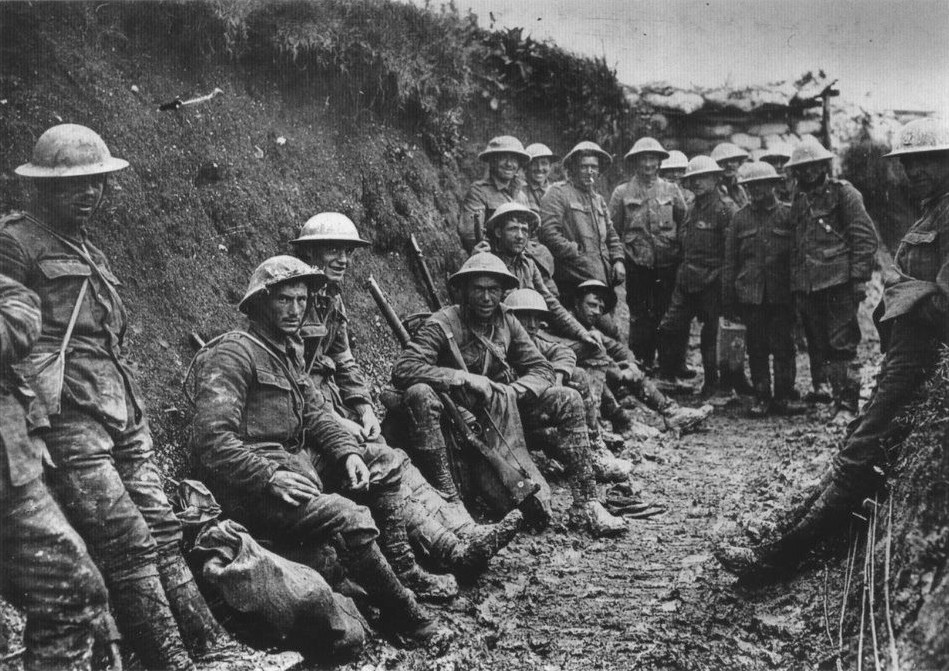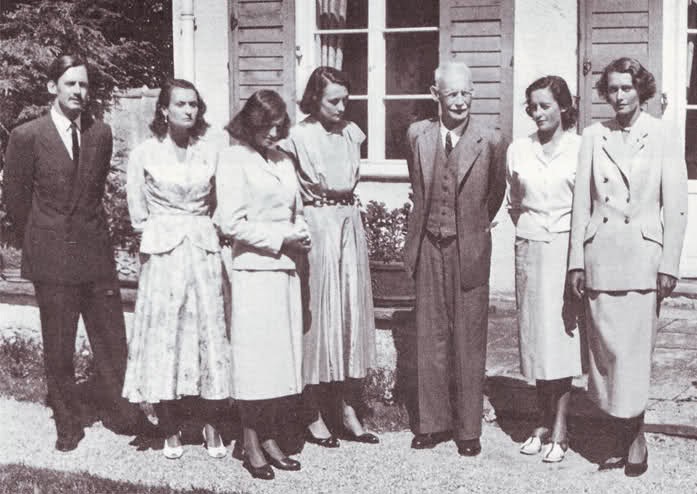|
Second Battle Of Villers-Bretonneux
The Second Battle of Villers-Bretonneux (also Actions of Villers-Bretonneux, after the First Battles of the Somme, 1918) took place from 24 to 27 April 1918, during the German spring offensive to the east of Amiens. It is notable for being the first occasion on which tanks fought against each other; it was the biggest and most successful tank action of the German army in the First World War. Three German A7Vs engaged three British Mark IV tanks, two of which were female tanks armed only with machine-guns. The two Mark IV females were damaged and forced to withdraw but the male tank, armed with 6-pounder guns, hit and disabled the lead A7V, which was then abandoned by its crew. The Mark IV continued to fire on the two remaining German A7Vs, which withdrew. The "male" then advanced with the support of several Whippet light tanks which had arrived, until disabled by artillery fire and abandoned by the crew. A counter-attack by two Australian brigades and a British brigade during ... [...More Info...] [...Related Items...] OR: [Wikipedia] [Google] [Baidu] |
Operation Michael
Operation Michael was a major German military offensive during the First World War that began the German Spring Offensive on 21 March 1918. It was launched from the Hindenburg Line, in the vicinity of Saint-Quentin, France. Its goal was to break through the Allied (Entente) lines and advance in a north-westerly direction to seize the Channel Ports, which supplied the British Expeditionary Force (BEF) and to drive the BEF into the sea. Two days later General Erich Ludendorff, the chief of the German General Staff, adjusted his plan and pushed for an offensive due west, along the whole of the British front north of the River Somme. This was designed to first separate the French and British Armies before continuing with the original concept of pushing the BEF into the sea. The offensive ended at Villers-Bretonneux, to the east of the Allied communications centre at Amiens, where the Allies managed to halt the German advance; the German Army had suffered many casualties and was ... [...More Info...] [...Related Items...] OR: [Wikipedia] [Google] [Baidu] |
Henry Rawlinson, 1st Baron Rawlinson
General Henry Seymour Rawlinson, 1st Baron Rawlinson, (20 February 1864 – 28 March 1925), known as Sir Henry Rawlinson, 2nd Baronet between 1895 and 1919, was a senior British Army officer in the First World War who commanded the Fourth Army of the British Expeditionary Force at the battles of the Somme (1916) and Amiens (1918) as well as the breaking of the Hindenburg Line (1918). He commanded the Indian Army from 1920 to 1925. Early life Rawlinson was born at Trent Manor in Dorset on 20 February 1864. His father, Sir Henry Rawlinson, 1st Baronet, was an Army officer, and a renowned Middle East scholar who is generally recognised as the father of Assyriology. He received his early formal education at Eton College. Early military career After passing through commissioned officer training at the Royal Military College, Sandhurst, Rawlinson entered the British Army as a lieutenant in the King's Royal Rifle Corps in India on 6 February 1884. His father arranged for him to serv ... [...More Info...] [...Related Items...] OR: [Wikipedia] [Google] [Baidu] |
Mark IV Tank
The Mark IV (pronounced ''Mark four'') was a British tank of the First World War. Introduced in 1917, it benefited from significant developments of the Mark I tank (the intervening designs being small batches used for training). The main improvements were in armour, the re-siting of the fuel tank and ease of transport. A total of 1,220 Mk IV were built: 420 "Males", 595 "Females" and 205 Tank Tenders (unarmed vehicles used to carry supplies), which made it the most numerous British tank of the war. The Mark IV was first used in mid 1917 at the Battle of Messines Ridge. It remained in British service until the end of the war, and a small number served briefly with other combatants afterwards. Development The director of the Tank Supply Department, Albert Gerald Stern, first intended to fit the Mark IV with a new engine and transmission. Production of battle tanks was halted until the new design was ready, necessitating the use of the Mark II and III as interim training tanks. ... [...More Info...] [...Related Items...] OR: [Wikipedia] [Google] [Baidu] |
Moroccan Division (France)
) 1914 – First Battle of the Marne (''Bataille des Marais de Saint-Gond'')(french: Bataille des Marais de Saint-Gond) 1915 – Bataille de l'Artois 1915 – 2e Bataille de Champagne 1916 – Bataille de la Somme 1917 – Bataille des monts de Champagne 1917 – Bataille de Verdun 1918 – Bataille de l'Aisne 1918 – Offensive des Cent-Jours ( Bataille de Vauxaillon)(french: Bataille de Vauxaillon) , notable_commanders= , anniversaries= , identification_symbol= ''Division de Marche du Maroc'' (D.M du Maroc) , identification_symbol_label= Marching Division of Morocco , identification_symbol_2= ''Division Marocaine'' ''1re Division Marocaine ''(D.M, 1re D.M)'' , identification_symbol_2_label= 1st Moroccan Division The Moroccan Division (french: Division marocaine, 1re D.M) or the 1st Moroccan Division of 1914, initially the Marching Division of Morocco (french: « Division de Marche du Maroc »D.M du Maroc) was an infantry division of France's Army of Africa (french: ... [...More Info...] [...Related Items...] OR: [Wikipedia] [Google] [Baidu] |
8th Division (United Kingdom)
The 8th Infantry Division was an infantry division of the British Army that was active in both the First and Second World Wars. The division was first formed in October 1914 during the First World War, initially consisting mainly of soldiers of the Regular Army and served on the Western Front throughout the war, sustaining many casualties, before disbandment in 1919. The division was reactivated in Palestine, under the command of Major-General Bernard Montgomery, in the late 1930s in the years running up to the Second World War before being disbanded in late February 1940. It was briefly reformed in Syria in an administrative role during 1942-3. History Second Boer War During the Second Boer War, an 8th division was active in South Africa from early 1900 until the war ended in 1902. It was under the command of Lieutenant-General Sir Leslie Rundle, and included a brigade division of Royal Artillery, one squadron of cavalry, one company of Royal Engineers, one company of Army Ser ... [...More Info...] [...Related Items...] OR: [Wikipedia] [Google] [Baidu] |
58th Division (United Kingdom)
The 58th (2/1st London) Division was an infantry division created in 1915 as part of the massive expansion of the British Army during the First World War. It was a 2nd Line Territorial Force formation raised as a duplicate of the 56th (1/1st London) Division. After training in Britain, the division joined the British Expeditionary Force (BEF) on the Western Front in 1917. It saw action at the battles of Arras and Passchedaele in 1917 and the German spring offensive in 1918. It then took part in the Battle of Amiens and the final Allied Hundred Days Offensive of the war. The division was recreated during the Second World War, as an imaginary deception formation. Origin The formation of reserve or 2nd Line TF units was authorised by the War Office on 31 August 1914. At first they comprised those members of the pre-war parent unit who had not volunteered for or were unfit for overseas service, who trained the flood of volunteers who came forward. Later, the 2nd Line formations ... [...More Info...] [...Related Items...] OR: [Wikipedia] [Google] [Baidu] |
15th Brigade (Australia)
The 15th Brigade was an infantry brigade of the Australian Army. Originally raised in 1912 as a Militia formation, the brigade was later re-raised in 1916 as part of the First Australian Imperial Force during World War I. The brigade took part in the fighting on the Western Front in France and Belgium during 1916–1918 before being disbanded in 1919. After this it was re-raised as a part-time unit of the Citizens Force in 1921 in Victoria. During World War II the brigade undertook defensive duties and training in Victoria and Queensland, before being deployed to New Guinea in 1943. Over the course of 1943 and 1944, it took part in the Salamaua–Lae, Markham–Ramu campaigns before returning to Australia in late 1944. In mid-1945, the brigade was committed to the Bougainville campaign, before being disbanded following the end of hostilities. History The 15th Brigade traces its origins to 1912, when it was formed as a Militia brigade as part of the introduction of the compuls ... [...More Info...] [...Related Items...] OR: [Wikipedia] [Google] [Baidu] |
14th Brigade (Australia)
The 14th Brigade was an infantry brigade of the Australian Army. Originally raised in 1912 as a Australian Army Reserve, Militia formation, it was later re-raised in 1916 as part of the First Australian Imperial Force for service during World War I, the brigade was assigned to the 5th Division (Australia), 5th Division and served on the Western Front (World War I), Western Front between 1916 and 1918 before being disbanded. It was later re-raised as part of the Australia's part-time military forces during the inter-war years. During World War II, the brigade was a Militia formation and it took part briefly in the New Guinea campaign with elements of the brigade undertaking defensive duties around Port Moresby before taking part in the fighting Kokoda Track campaign, along the Kokoda Track and around the Japanese beachheads at Battle of Buna–Gona, Buna–Gona. The brigade was disbanded in mid-1943 as part of a rationalisation of Australian military forces as a result of manpower s ... [...More Info...] [...Related Items...] OR: [Wikipedia] [Google] [Baidu] |
13th Brigade (Australia)
The 13th Brigade is an Army Reserve formation of the Australian Army. Originally formed in 1912 as a Militia formation in Victoria, the brigade was re-raised as a First Australian Imperial Force unit during World War I and fought on the Western Front. In the interwar years, the brigade was re-raised as a part-time formation based in Western Australia and later fought in the New Britain Campaign during World War II. It is currently headquartered at Perth in Western Australia and has units located across the state in locations such as Geraldton, Kalgoorlie, Albany, Katanning, Joondalup and Rockingham. The current brigade was formed in 1988 and is tasked with the protection of Western Australia. It forms part of the 2nd Division of the Australian Army. History The 13th Brigade traces its origins to 1912, when it was formed as a Militia brigade as part of the introduction of the compulsory training scheme, assigned to the 3rd Military District. At this time, the brigade's c ... [...More Info...] [...Related Items...] OR: [Wikipedia] [Google] [Baidu] |
Georg Von Der Marwitz
Georg Cornelius Adalbert von der Marwitz (7 July 1856 – 27 October 1929) was a Prussian cavalry general, who commanded several German armies during the First World War on both the Eastern and Western fronts. Early military career Marwitz was born in Stolp (Słupsk) in the Province of Pomerania and entered the Prussian Army in 1875. In 1881 he married Helene von Kameke, daughter of Prussian War Minister Georg von Kameke, with whom he had five children. From 1883 to 1886 he attended the Prussian Military Academy. Until 1900 he commanded a cavalry regiment, at which point he became chief of staff of XVIII Corps. Before the outbreak of the First World War he was the Inspector-General of Cavalry. World War I Marwitz was assigned to the Western Front in 1914 as commander of II Cavalry Corps, and participated in the Battle of Haelen. After this first battle Marwitz was transferred to the Eastern Front to take command of the newly formed XXXVIII Reserve Corps, which he led in t ... [...More Info...] [...Related Items...] OR: [Wikipedia] [Google] [Baidu] |
Crown Prince Rupprecht Of Bavaria
Rupprecht, Crown Prince of Bavaria, Duke of Bavaria, Franconia and in Swabia, Count Palatine by (the) Rhine (''Rupprecht Maria Luitpold Ferdinand''; English: ''Robert Maria Leopold Ferdinand''; 18 May 1869 – 2 August 1955), was the last heir apparent to the Bavarian throne. During the first half of the First World War he commanded the 6th Army on the Western Front. From August 1916, he commanded Army Group Rupprecht of Bavaria, which occupied the sector of the front opposite the British Expeditionary Force. Childhood Rupprecht was born in Munich, the eldest of the thirteen children of Ludwig III, the last King of Bavaria, and of Archduchess Maria Theresa of Austria-Este, a niece of Duke Francis V of Modena. He was a member of the lineage of both Louis XIV of France and William the Conqueror. As a direct descendant of Henrietta of England, daughter of Charles I of England, he was claimant to the thrones of England, Scotland and Ireland in the Jacobite succession. His e ... [...More Info...] [...Related Items...] OR: [Wikipedia] [Google] [Baidu] |
Erich Ludendorff
Erich Friedrich Wilhelm Ludendorff (9 April 1865 – 20 December 1937) was a German general, politician and military theorist. He achieved fame during World War I for his central role in the German victories at Liège and Tannenberg in 1914. Following his appointment as First Quartermaster-general (german: Erster Generalquartiermeister) of the Imperial Army's Great General Staff in 1916, he became the chief policymaker in a ''de facto'' military dictatorship that dominated Germany for the rest of the war. After Germany's defeat, he contributed significantly to the Nazis' rise to power. Erich Ludendorff came from a family of the minor nobility in Ludendorff, (now Kruszewnia), located in the Prussian province of Posen. After completing his education as a cadet, he received his commission as a junior officer in 1885. Later in 1893, Ludendorff was admitted to the prestigious German War Academy and was recommended by its commandant to the General Staff Corps only a year later. ... [...More Info...] [...Related Items...] OR: [Wikipedia] [Google] [Baidu] |







